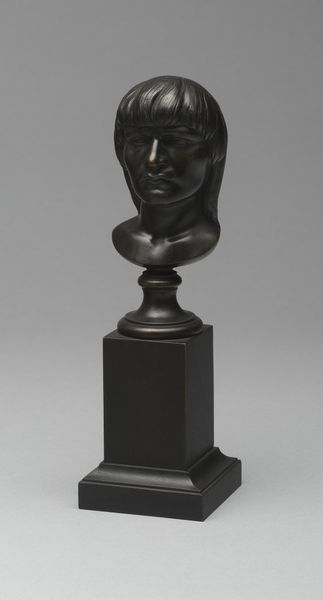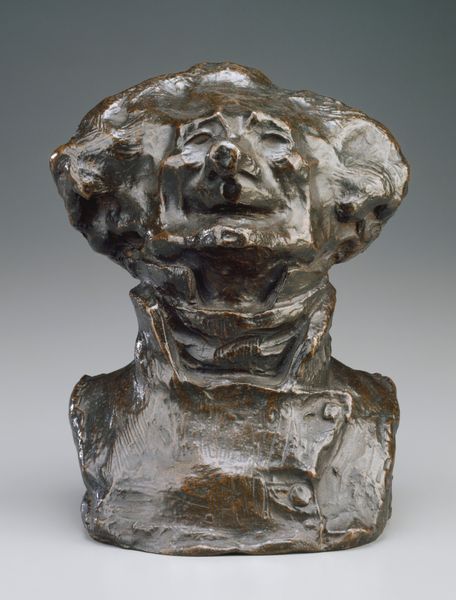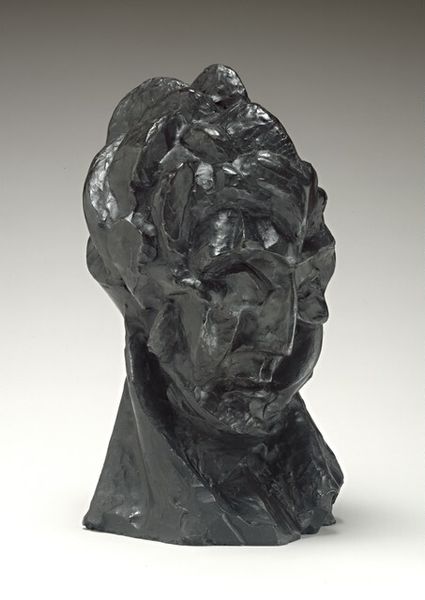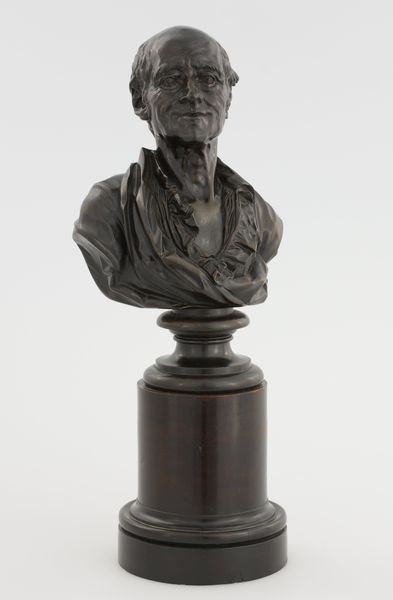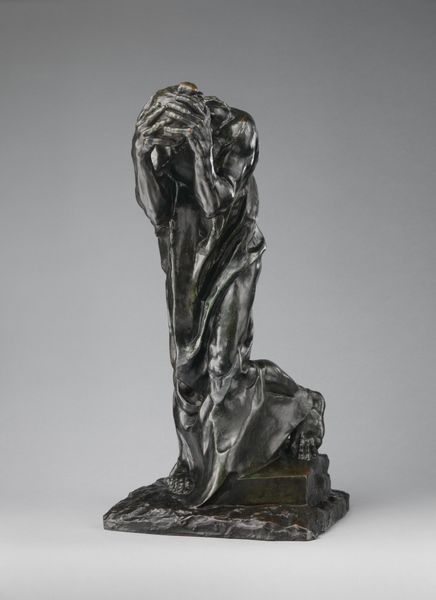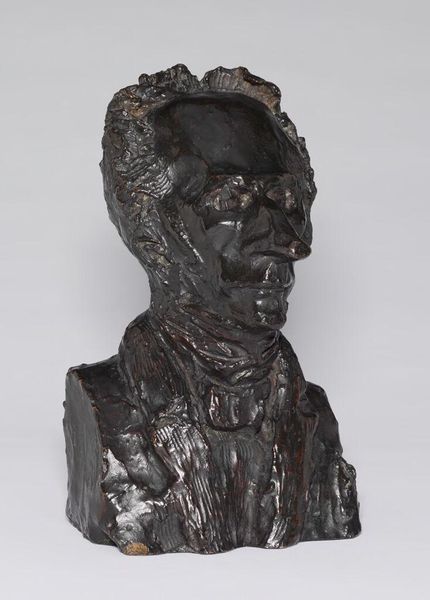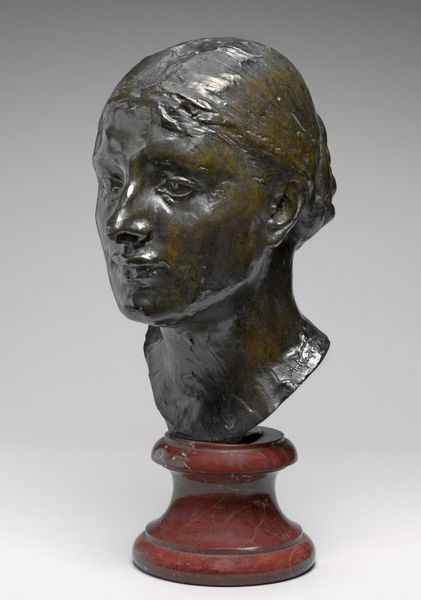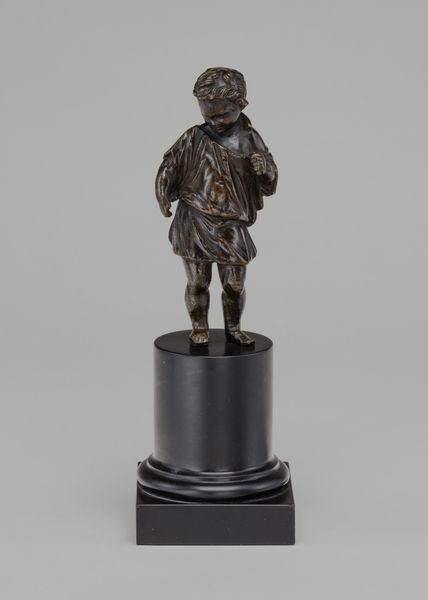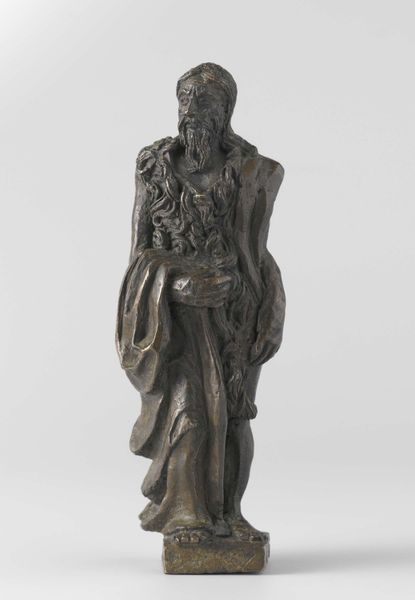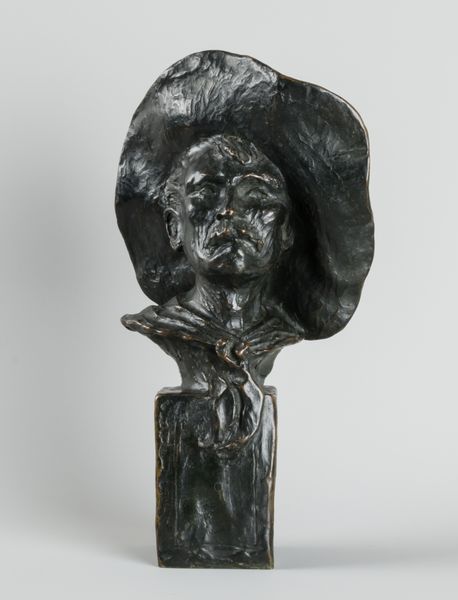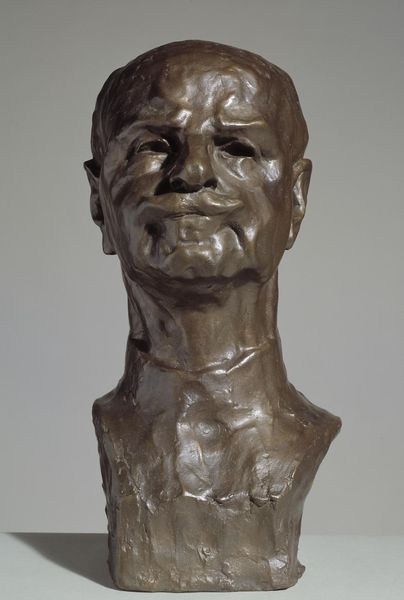
bronze, sculpture
#
portrait
#
sculpture
#
bronze
#
sculpture
#
academic-art
#
decorative-art
#
realism
Dimensions: 43.2 × 13 × 11.4 cm (17 × 5 1/8 × 4 1/2 in.)
Copyright: Public Domain
Editor: So, here we have "Imogen," a bronze sculpture crafted by Erastus Dow Palmer in 1874. It's strikingly shiny and seems to capture a somber mood. What catches your eye in this piece? Curator: I’m drawn to the conscious effort to elevate bronze from functional object to high art. Palmer is clearly engaging with, and challenging, the established hierarchies of art materials in his time. Consider the labor involved in creating such a polished surface. Editor: The polish is remarkable. Do you think it impacts the reception of the work? Curator: Absolutely. The smoothness, the sheen… it speaks to the aspirations of the burgeoning middle class in America at the time. They desired objects that signified refinement and taste, but made through industrialized process. Bronze, though ancient, was increasingly a manufactured metal. Look at how the base of this sculpture is embellished and fabricated, not sculpted by hand like the bust, a mass produced object. Editor: That’s an interesting observation about class aspiration through material. So, it is not the beauty in itself that matters. Curator: Not entirely. It is the tension between the artistry represented by a traditional sculpture of a bust and the means of its production, in which machine manufacturing plays a huge role, that make "Imogen" compelling for me. We're seeing the industrial revolution reflected not just in the subject, but in the making. The small panel relief repeats the sculpture in smaller scale. Editor: I never would have considered it like that. The choice of material, the polish... everything feeds into this complex social and manufacturing context. Thanks for broadening my perspective. Curator: Precisely! By interrogating the labor and materiality of art objects like "Imogen," we gain richer insight into the values and structures of their time. It helps contextualize our present one, as well.
Comments
No comments
Be the first to comment and join the conversation on the ultimate creative platform.
